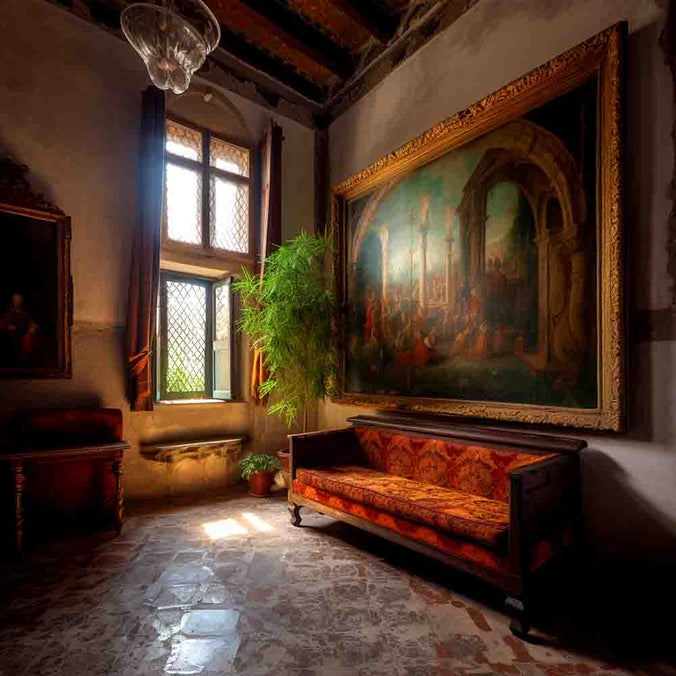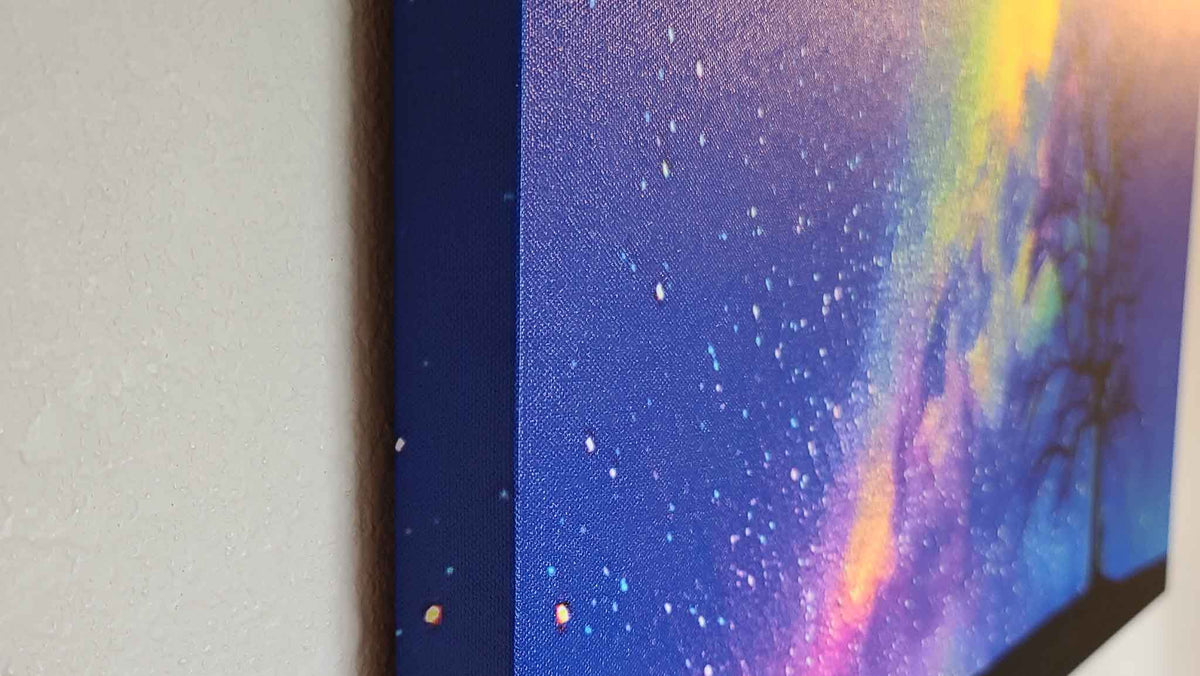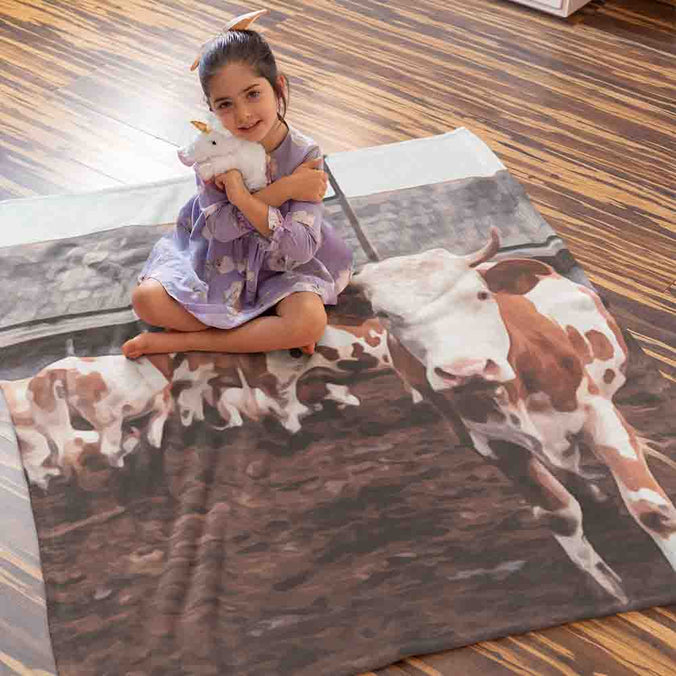Where Does Feng Shui Come From?

Where Does Feng Shui Come From?
Feng Shui, a 3,000-year-old Chinese art form, emphasizes the flow of energy (chi) in living spaces to create harmonious environments. Based on Taoist principles, it has influenced both ancient and modern architecture, including famous structures like Hong Kong's HSBC Building. By carefully balancing the five elements (wood, fire, earth, metal, and water) and implementing mindful placement of objects, colors, and furniture, Feng Shui can improve personal well-being, relationships, and finances. Today, Western interior designers have adopted Feng Shui concepts, blending them with contemporary aesthetics, focusing on decluttering, natural materials, and balanced color schemes. Incorporating Feng Shui principles into your home through artwork can further enhance energy and ambiance, creating a positive and prosperous living space.
Ancient Chinese Art and Superstitious Beliefs
Originating in China, Feng Shui is based on Taoist principles and revolves around the concept of chi, or life force. By arranging objects and spaces to enhance the flow of energy, it's believed that one can create a happier and healthier environment. Feng Shui principles have been applied to various Chinese architectural examples, including tombs and temples, as well as in Chinese painting and calligraphy.
Despite being regarded by some as superstitious, Feng Shui has been proven to be scientific through centuries of practice and observation. From the placement of entrances to the symbolism of broken clocks, many traditional beliefs surrounding Feng Shui persist today.
Modern Chinese Architecture
In modern Chinese architecture, Feng Shui principles continue to play a significant role. Many famous buildings, such as the HSBC Building in Hong Kong, have been designed with Feng Shui in mind, with architects integrating shapes and balancing materials to optimize energy flow. Feng Shui has also influenced the layout of ancient Chinese cities, including the Forbidden City in Beijing and Hong Kong's financial district.
The Impact of Careful Construction and Placement
Careful construction and placement are essential in Feng Shui to create harmonious spaces. Proper placement and balancing of the five elements are crucial for ensuring optimal energy flow in a building. From windows and doors to the water element, every aspect of a building's design should be carefully considered to maximize the benefits of Feng Shui.
By using Feng Shui principles in the construction and arrangement of spaces, you can create a peaceful, beautiful, and harmonious environment that not only enhances personal well-being but also improves relationships and finances. Proper placement of objects, colors, and furniture is essential to attract positive energy and keep negative energies at bay.
Feng Shui in Modern Western Interior Design
The principles of Feng Shui have transcended cultural boundaries, and today, many Western interior designers have adopted this ancient art to create harmonious and balanced living spaces. Feng Shui's focus on energy flow, spatial arrangement, and the use of natural elements resonates with contemporary interior design trends that emphasize sustainability and well-being. From the use of colors to the strategic placement of furniture and decorative elements, Feng Shui has significantly influenced modern Western interior design.
In Western homes, Feng Shui principles are often applied by decluttering spaces and using natural materials like wood, stone, and plants. Additionally, designers focus on integrating natural light, creating a balance between open spaces and cozy nooks, and using color schemes that promote relaxation and positive energy. By blending traditional Feng Shui concepts with contemporary design aesthetics, Western designers have found a unique way to create spaces that are both visually appealing and energetically balanced.
Implementing Feng Shui in Your Home with Artwork
Incorporating Feng Shui principles into your home through artwork can greatly enhance the energy and ambiance of your living space. You can create a harmonious environment that promotes well-being, prosperity, and positive energy by choosing and placing artwork mindfully.
Here are some tips for using artwork from our eCommerce store to bring Feng Shui into your home:

- Select the right colors: Choose artwork with colors that correspond to the five elements (wood, fire, earth, metal, and water) and promote the energy you want to attract. For example, use green or brown for growth and vitality (wood), red for passion and warmth (fire), or blue and black for calmness and wisdom (water).
- Choose meaningful subjects: Select artwork that holds personal meaning or represents your aspirations. For instance, if you want to enhance your love life, opt for artwork depicting romantic scenes or couples. If you wish to attract wealth and success, choose images that symbolize abundance and prosperity.
- Position your artwork mindfully: Hang your artwork at eye level to promote positive energy flow and make sure it is not too high or too low. Avoid placing art directly opposite the front door, as this can cause energy to flow straight out of the house.
- Balance the elements: Aim for a balanced representation of the five elements in your artwork. For example, if you have a painting with a strong water element, consider adding a metal element, such as a metallic frame, to create balance.
- Use mirrors wisely: Mirrors can be powerful Feng Shui tools when used correctly. Place them strategically to reflect and amplify positive energy and artwork, but avoid positioning them directly opposite windows or doors, as this can cause energy to bounce out of the room.
By implementing Feng Shui principles with the artwork you purchase from our eCommerce store, you can create a harmonious and inviting environment in your home that fosters positive energy, well-being, and prosperity. Browse our collection of curated artwork to find the perfect pieces to enhance your living space today.
Feng Shui has a rich history rooted in ancient Chinese art and architecture, and its principles continue to influence both Eastern and Western design practices today. By focusing on the flow of energy, the arrangement of spaces, and the balance of natural elements, Feng Shui can create harmonious environments that promote well-being, prosperity, and positive energy. Whether you are designing a building, arranging your living space, or selecting artwork for your home, incorporating Feng Shui principles can enhance the beauty, balance, and energy of your surroundings. So, embrace this ancient wisdom and explore the transformative power of Feng Shui as you create spaces that support and uplift your life.
Leave A Reply
Your email address will not be published. Required fields are marked *






